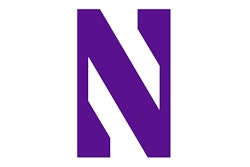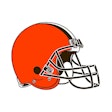Copyright 2017 Gannett Company, Inc.
All Rights Reserved
USA TODAY
About 30 miles north of Dallas, a real estate investor named Mike Giles decided last year to go toe-to-toe with Texas football.
Local officials here proposed building a $63 million high school football stadium. Giles, outraged by the costly plan, led a grass-roots effort to defeat the $220 million bond measure that included the stadium.
They went door-to-door to persuade fellow residents and visited more than 1,000 homes. They bought campaign-style signs that read, "It's OK to just say NO." They sought support from the local newspaper. Then, in May -- with Giles saying he sensed among residents support for his position -- came the vote.
The stadium and bond measure passed with nearly two-thirds of the vote. It will be the third high school stadium in Texas built at a cost of more than $60 million, and its projected price tag has risen to $70 million.
From AB: Blog: Creating Buy-In for $70M McKinney ISD Stadium
"People are very religious around here," Giles, 71, told USA TODAY Sports, "and football is definitely a religion in Texas."
The football gods go by names such as Landry, Staubach, Dorsett, Aikman and Smith. In addition to America's Team (the Dallas Cowboys), the state has more Football Bowl Subdivision college teams (12) than any other, led by Texas and Texas A&M. It has Friday Night Lights, the book, TV series and movie based on the football team at Permian High in Odessa. And it has football cathedrals far more lavish than what's coming to McKinney.
NRG Stadium, the Houston Texans' $350 million home, will host Super Bowl LI when the New England Patriots play the Atlanta Falcons on Sunday. Then there is AT&T Stadium, the $1.2billion home of the Cowboys and the first NFL stadium built at a cost of more than $1billion.
As concussion research brings safety concerns and casts a specter on football, perhaps no state keeps embracing it as Texas does. About 130 miles to the south lives a man who understands the fervor as few others do.
***
Dave Campbell, 91, arrived at the Texas Sports Hall of Fame last week carrying a small stack of magazines -- Dave Campbell's Texas Football magazines. He dispatched someone to find a Sharpie.
As usual, he intended to autograph the copies of a magazine cherished by Texans.
At the annual Texas High School Coaches Association meetings, high school football coaches in the state routinely wait in line for Campbell to personalize an autograph on the cover of the latest issue of the magazine.
"Texas is very passionate about football," Campbell offered.
Two summers ago, Campbell said, he autographed a copy of the first magazine's issue, published in 1960, that the owner bought from a collector in Houston for $800. The copy originally sold for 50 cents.
A longtime sports editor of the Waco Tribune-Herald, Campbell said he and a few friends trying to supplement their incomes decided to start a magazine but initially picked another sport: bowling. When they couldn't find enough advertisers, Campbell said, they settled on football. After losing money the first two years in operation, the popularity of the magazine in Texas grew like football itself.
Since the magazine made its debut in 1960, the number of high school football teams has doubled to more than 1,400.
"You know, there's an old saying in Texas, particularly in small towns," Campbell said. "Friday nights, if your team is playing out of town, there'll be nobody left. Just turn out the lights."
Tapping into that passion, Campbell said, he was making $100,000 a year by 1985, when he sold the magazine to a company in Kentucky for more than $1 million.
"I was wearing out," he said.
The magazine has since changed hands four times and is now owned by Sports in Action, a company near Dallas. The company has launched a TV show with Fox Sports, a website and podcasts. But the business still centers around the magazine, with circulation approaching 100,000, according to company President Adam Hochfelder.
Campbell still writes the annual letter from the editor for the magazine cherished by Texans. Mike Perrin, athletics director at the University of Texas, has the first nine issues of the magazine bound in leather and within easy reach at his office in Austin.
"I don't read it like a bible every day," said Perrin, who played high school football in Texas. "But I do frequently refer to it.
"Somebody will say, 'Well, what about old so-and-so?' And I'm, 'Wait a minute, let's go look at that.'"
Each year, the magazine previews every high school in the state, and that includes the six-man team from a tiny town about 125 miles west of here.
***
Residents warn visitors driving at night to watch out for the deer and the possum that will dart across the road and into oncoming traffic. But opposing football teams headed for this town of 333 residents and zero stoplights are more concerned about the coyotes -- the Coyotes of Richland Springs High School, that is.
The football team, which plays its home games at an old rodeo arena, has won back-to-back state championships and eight state titles in the last 13 seasons.
"What does the team mean to the town?" asked Sandy Reed, mother-in-law of the Coyotes head coach. "The team is the town."
In 1979, because of dwindling enrollment, Richland High joined the ranks of six-man football. The Texas high school association eliminated eight-man in the 1970s, leaving schools with too small of an enrollment to field 11-man teams only two options: play six-man football or the equivalent of a Texas sacrilege -- no football at all.
High schools in almost 250 small towns play a brand of football that produces basketball-type scores. In the last two seasons, teams have scored more than 100 points 15 times.
In the state championship game this season, Richland Springs beat Balmorhea 96-50. Eighteen of the 20 boys enrolled in the high school this academic year played on the football team.
Having gained widespread acclaim, Richland Springs recently purchased additional bleachers and has attracted as many as 3,000 fans to home games.
"Six-man football helps keep a lot of communities and schools open," said Jerry Burkhart, head coach at Richland Springs. "Because I'm telling you, this town don't have anything. This school is it."
Taking over the team in 2004, Burkhart, 44, led the Coyotes to their first state title and needs one more title to reach nine, which would tie him for the most won by a high school coach in Texas.
To help develop future players, Burkhart created a league in which children as young as 4 play flag football. They suit up in helmets and pads when they reach third grade.
With those pre-kindergarten football players running six-man plays, Richland Springs is proof that not everything is big in Texas. But 270 miles southeast, in a suburb of Houston, there's something enormous.
***
As a photographer set up equipment near the football field at Episcopal High School, Marvin Wilson and Walker Little stood side-by-side, a picture of enormity.
Little, a 6-7, 300-pound senior, is ranked among the top high school offensive linemen in the country. He has committed to Stanford.
Wilson, a 6-5, 320-pound senior, is rated among the top defensive linemen in the country. He said he will name his college of choice on national signing day, which is Wednesday.
They are the best pair of linemen at any high school in the country and further proof of the power of football in Texas.
As a freshman, Wilson enrolled at the private school, intending to play basketball before the school's head football coach, Steve Leisz, saw Wilson doing jumping drills during summer workouts. "Marvin was at 260 pounds jumping higher than anybody else," Leisz said. "He said, 'Coach, I'm ranked 75th in the country in basketball. I don't play football.' And I go, 'Marvin, you will be No.1 in the country in football.'
"So I talked to his mother that day."
The next day, Wilson joined the football team.
He is ranked by 247Sports as the sixth-best high school player in the country.
Ranked No.10 is Little, who said he began playing tackle football in elementary school only after his older brother implored him not to "be a baby." Little feared the prospect of getting hit.
At Episcopal, a private school in the Houston suburb, Little and Wilson have taken and dished out big hits when they are standing not side-by-side but face-to-face at practice.
"Marvin and Walker are generational-type players," Leisz said.
On campus, one of the few things noticeably bigger than the two linemen is an athletic complex heavy on football facilities. It's being built near the school's $24million math and science center at at a cost of $80million. But that understates the apparent value of football in this state.
It's priceless.
Read More of Today's AB Headlines
Subscribe to Our Daily E-Newsletter
Terms and Conditions Privacy Policy































